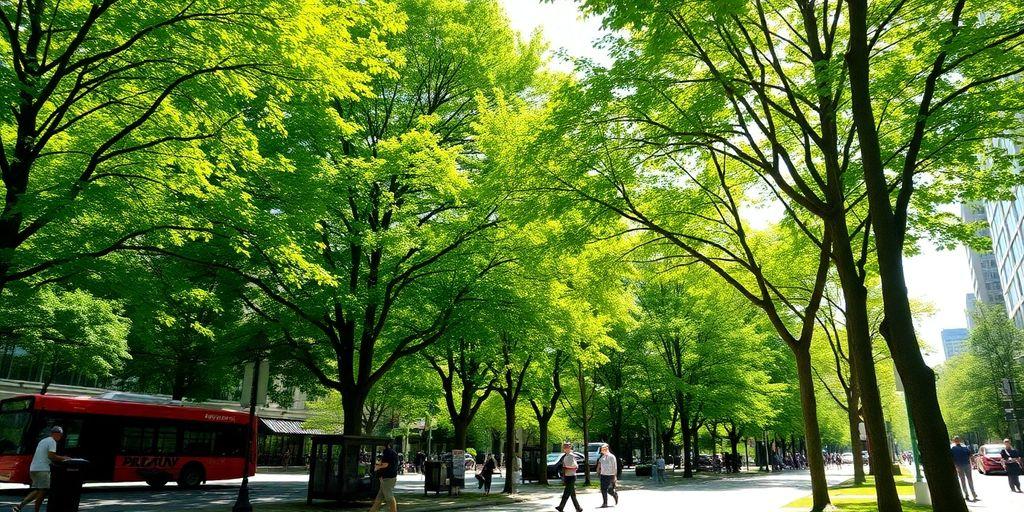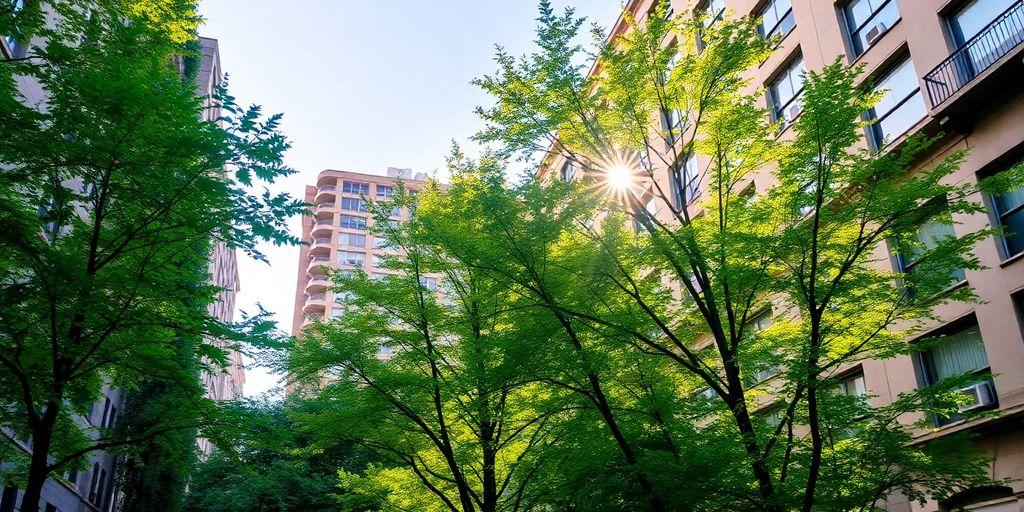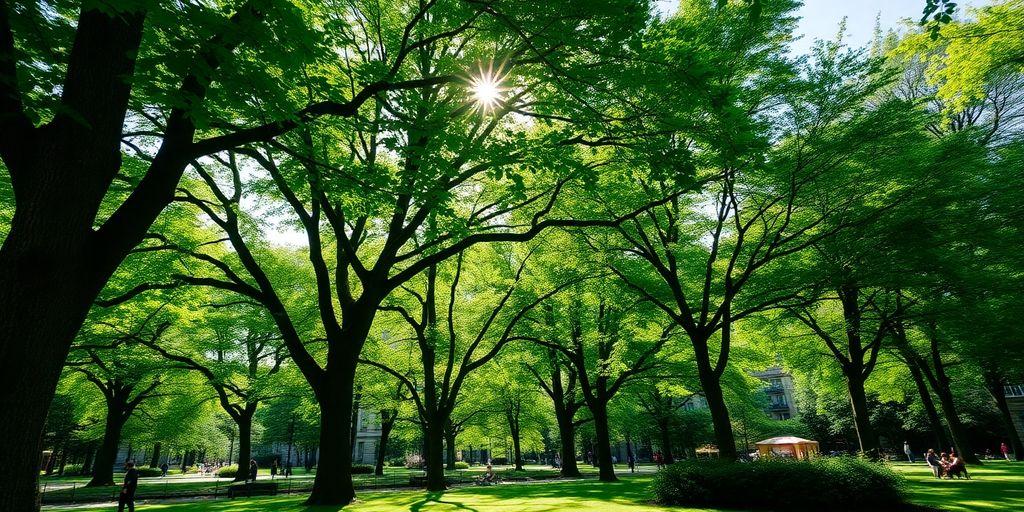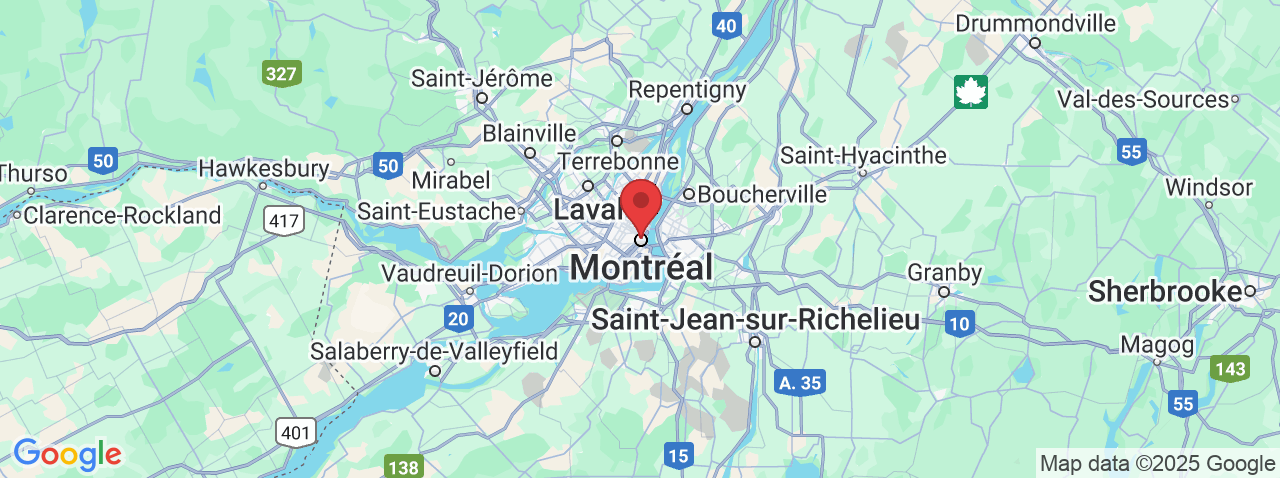Tree Service Montreal
Effective Tree Protection in Montreal: Strategies for Preserving Urban Greenery
Explore strategies for Tree Protection in Montreal, enhancing urban greenery and community involvement.
In Montreal, keeping our trees healthy and thriving isn't just about looking pretty—it's about making our city a better place to live. With the right strategies, we can protect our urban greenery and enjoy all the benefits it brings. From cooling down our streets during hot summers to improving our air quality, trees are a vital part of our urban landscape. Let's dive into some effective ways to ensure our trees continue to flourish.
Key Takeaways
. Montreal uses science-based practices to manage its urban forest, ensuring trees are healthy and diverse.
. Community involvement is crucial, with citizens encouraged to participate in tree planting and care.
. Climate change poses challenges, but innovative solutions are being developed to protect urban trees.
Innovative Urban Forest Management in Montreal
Implementing Science-Based Arboricultural Practices
In Montreal, we've embraced a data-driven approach to managing our urban forest. By integrating science-based arboricultural practices, we're making informed decisions about tree care and maintenance. This means selecting tree species that are not only hardy but also well-suited to urban conditions. It’s all about putting the right tree in the right place. This strategic approach reduces the need for frequent replacements and minimizes maintenance costs. We also focus on pruning and other techniques to extend the life of our trees, ensuring they remain healthy and safe.
The Role of Technology in Tree Health Monitoring
Technology plays a pivotal role in monitoring the health of our urban trees. We use advanced tools like GIS mapping and remote sensing to keep track of tree health across the city. These technologies help us identify trees that might be under stress or in decline, allowing us to take action before problems escalate. This proactive monitoring ensures that our urban forest remains robust and resilient.
Balancing Tree Removal and Preservation
Tree removal is sometimes necessary, but we strive to balance this with preservation efforts. When a tree is removed, it's often because it poses a safety risk or is in severe decline. However, we make sure to replace it with a suitable species that contributes to the biodiversity of our urban forest. This approach helps maintain a diverse and healthy tree population across Montreal.
Enhancing Biodiversity Through Strategic Planting
Biodiversity is a key focus in our urban forest management strategy. By planting a variety of species, we're enhancing the ecological diversity of our city. This not only supports local wildlife but also makes our urban forest more resilient to pests and diseases. We've even established a municipal tree nursery to grow a diverse range of species, ensuring a steady supply of trees that can thrive in our unique urban environment.
In Montreal, our commitment to innovative urban forest management is not just about planting trees; it's about nurturing a sustainable ecosystem that benefits everyone.
Community Engagement and Education in Tree Protection

Promoting Public Awareness of Urban Greenery Benefits
In Montreal, we believe in the power of knowledge. Educating the public about the benefits of urban greenery isn't just a task—it's a mission. Trees aren't just pretty to look at; they clean our air, cool our streets, and even boost our mood. We run campaigns that highlight these benefits, aiming to make everyone see trees as allies in urban living.
Involving Citizens in Tree Planting Initiatives
We’ve rolled up our sleeves and invited the community to join us in planting trees. It's not just about adding greenery; it's about building a sense of ownership and pride. When people plant trees in their neighborhoods, they’re more likely to care for them. Plus, it’s a great way to meet neighbors and strengthen community bonds.
Educational Programs for Sustainable Urban Forestry
Our educational programs are designed to teach sustainable urban forestry practices. We hold workshops and seminars that cover everything from choosing the right tree species to understanding the ecological roles of urban forests. Participants leave with practical knowledge and a deeper appreciation for the trees around them.
Collaborations with Local Environmental Organizations
Partnering with local environmental groups amplifies our efforts. These collaborations bring in expertise and resources that we might not have on our own. Together, we organize events, share knowledge, and work on projects that aim to protect and expand our urban forests. It’s a team effort, and every partner plays a crucial role.
Challenges and Solutions in Urban Tree Preservation

Addressing the Impact of Climate Change on Urban Trees
Climate change is reshaping our urban landscapes, and trees are not immune. We are seeing shifts in temperature and precipitation patterns, which can stress trees and make them more susceptible to disease. Adapting our urban forests to these changes is crucial for their survival. We need to select tree species that are more resilient to these conditions. This might mean choosing trees that can handle heat and drought better than others. Additionally, we must consider the timing of planting and maintenance activities to align with changing seasonal patterns.
Combating Invasive Species and Pests
Invasive species and pests are a constant threat to urban trees. These organisms can spread rapidly, often outcompeting native species and leading to tree decline. To tackle this, we must implement monitoring programs to detect these threats early. Regular inspections and community reporting can help us stay ahead. Integrated pest management strategies can be employed, combining biological, cultural, and chemical tools to manage pests effectively without causing harm to the environment.
Overcoming Urban Development Pressures
Urban development often comes at the expense of green spaces. As cities expand, trees are frequently removed to make way for new buildings and infrastructure. We need to find a balance between development and preservation. One approach is to incorporate green infrastructure into urban planning. This includes designing buildings and roads that coexist with existing trees or planting new ones as part of the development process. Community involvement in planning can ensure that development projects prioritize greenery.
Innovative Solutions for Soil and Water Management
Trees in cities face challenges with soil compaction and limited water availability. These conditions can hinder root growth and reduce tree health. To address this, we can use innovative soil management techniques, such as using structural soils that support root expansion while maintaining stability. Water management systems, like rain gardens and permeable pavements, can help manage stormwater and provide trees with the moisture they need.
Urban trees are vital to our cities, offering shade, beauty, and ecological benefits. By addressing these challenges head-on, we can ensure that our urban forests thrive for generations to come.
Economic and Environmental Benefits of Tree Protection

Enhancing Property Values Through Urban Greenery
In Montreal, our urban trees play a crucial role in boosting property values. Neighborhoods with lush, green streets often see a rise in real estate prices. Trees add an aesthetic appeal that makes homes more attractive to potential buyers. It's not just about beauty, though—homes in tree-rich areas tend to sell faster and at higher prices.
Reducing Urban Heat Island Effect with Tree Canopy
Trees are nature's air conditioners. By providing shade and releasing moisture, they help cool down our city, reducing the urban heat island effect. This cooling effect not only makes our summers more bearable but also cuts down on energy costs as we rely less on air conditioning.
Improving Air Quality and Public Health
Our urban forest acts as a natural air filter, trapping pollutants and releasing clean oxygen. This helps reduce respiratory issues among residents and contributes to overall public health. Cleaner air leads to healthier communities, cutting down healthcare costs and improving quality of life.
Supporting Local Wildlife and Ecosystems
Trees offer habitat and food for a variety of local wildlife. From birds to insects, our urban greenery supports biodiversity in the city. This not only enriches our environment but also helps maintain ecological balance. The presence of diverse species can even enhance the resilience of our urban ecosystem.
Protecting our urban trees is a win-win situation. We not only enjoy economic benefits like increased property values, but we also gain environmental advantages that improve our quality of life.
